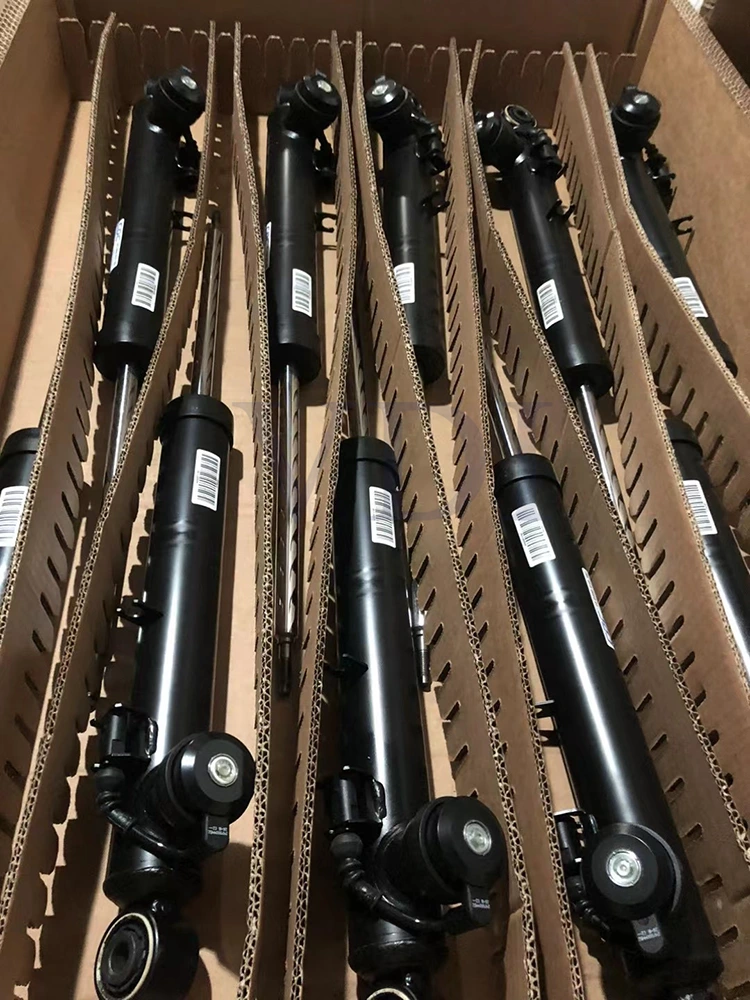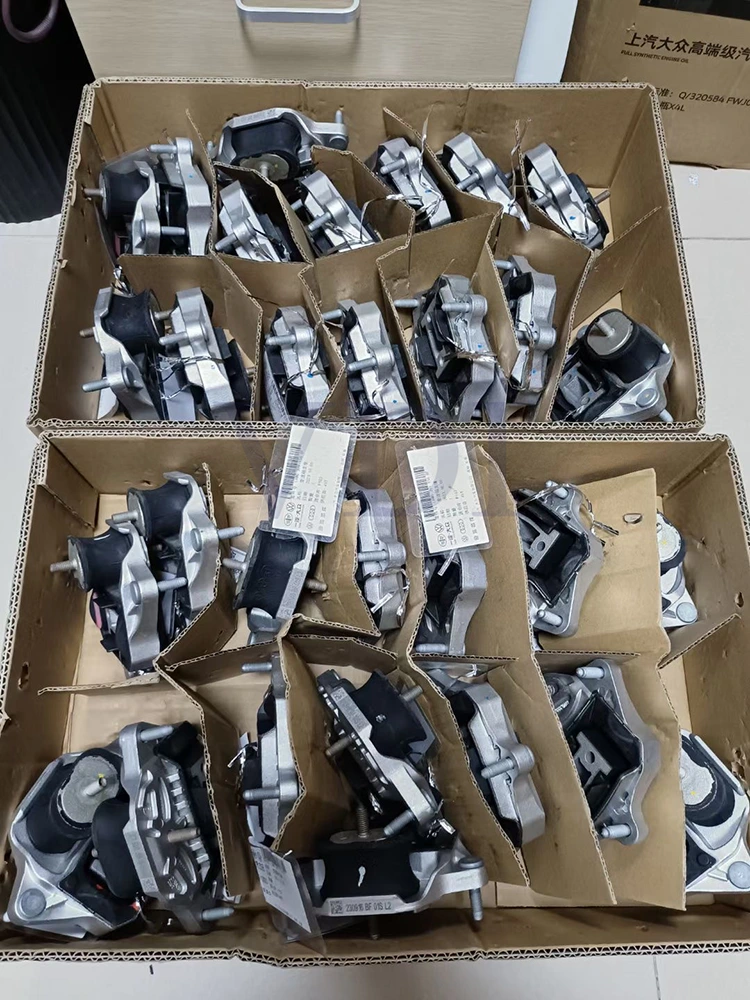The Engine mount 7P6199131, made of high-quality rubber, ensures excellent vibration isolation, precise engine alignment for smooth operation, noise reduction for enhanced driving comfort, and easy installation without the need for complex tools.
VW TOUAREG
●Engine mount 7P6199131 is suitable for vehicles requiring enhanced vibration damping.
●Reduces noise and discomfort during daily driving.
●Engine mount 7P6199131 is a cost-effective option for regular maintenance and repairs.
●Securely stabilizes the engine, improving overall ride quality.

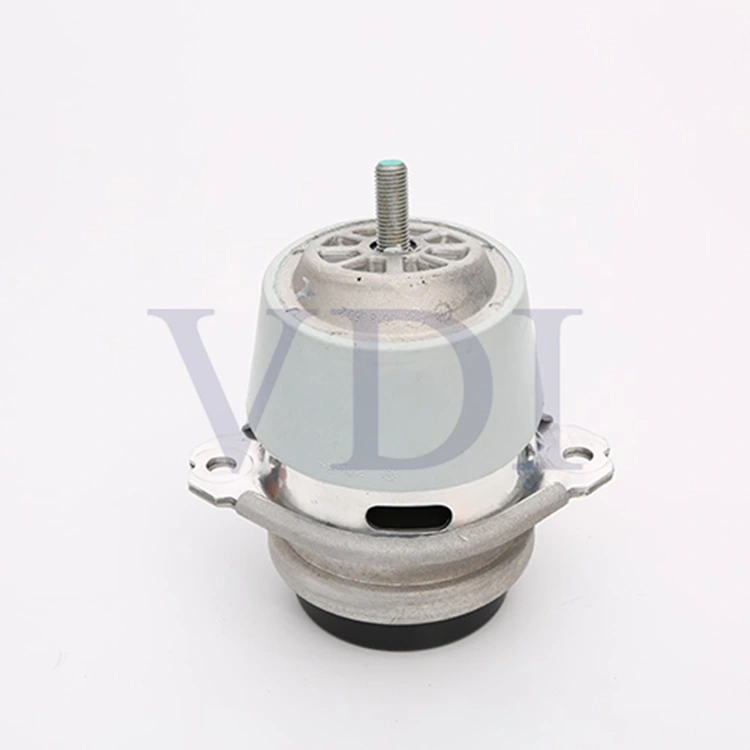
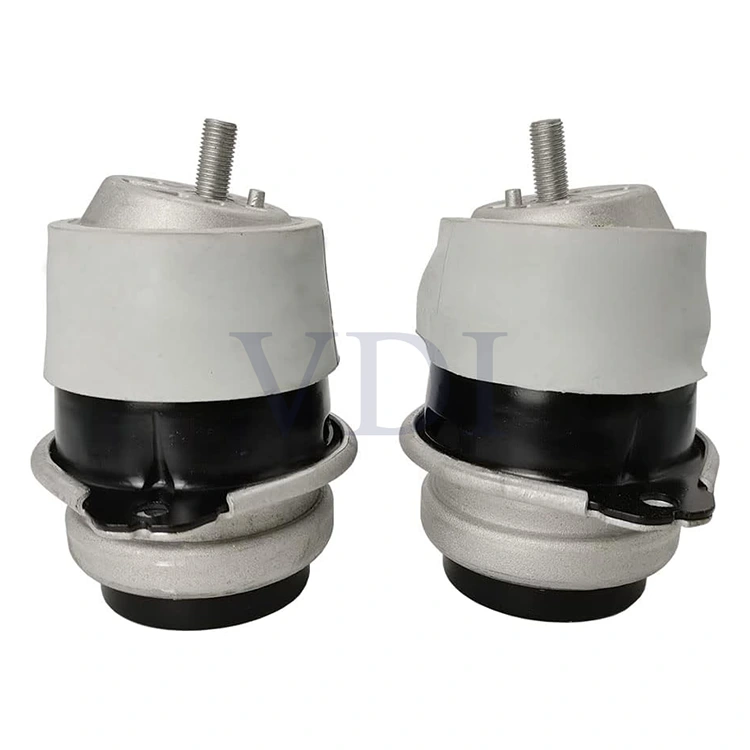
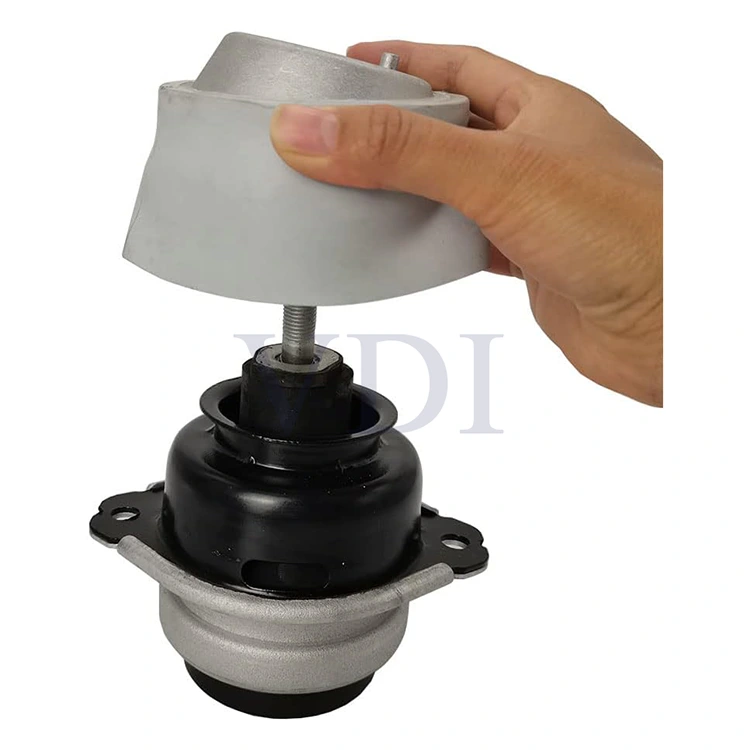




Healthy engine mounts stop the whole damn car from turning into a paint shaker and taking out half the drivetrain with it. Here’s the dead-simple replacement routine that actually works—no bullshit added.
1.Set Up Right Park on flat ground, yank the handbrake, kill the ignition. Throw on gloves and safety glasses—don’t be that guy. Grab your gear: floor jack, jack stands, full wrench/socket set, pry bar, torque wrench, ratchet—everything. Lift the side you’re working on, slide the stands in solid. Jack only under the car? That’s how people get crushed. Never.
2.Find the Mounts They’re the big rubber bricks (sometimes with metal plates) jammed between the engine and the frame—usually 2 to 4 of them. All they do is eat vibration and stop the engine from doing backflips. Move anything blocking you—airbox, intake hose, heat shields, whatever. If it’s in the way, it’s coming off.
3.Pull the Old One Slide a jack with a wood block under the oil pan (or hang an engine bar from the top) to take the engine’s weight. No support = engine on your face. Break every bolt loose—engine side and frame side. Keep the good ones. Bolts out → pry bar → wiggle and curse the old mount out. Watch the wires and hoses—don’t rip anything.
4.Install the New One Drop the Engine mount 7P6199131 right back where the old one lived. Line the holes up perfectly (some only go one direction). Run the bolts in by hand, snug them, then hit the exact torque from the manual. Too loose = wobble city. Too tight = you’re doing this again next month. Check the engine sits straight before final torque—crooked engine murders new mounts fast.
5.Put It All Back Together Bolt back everything you removed—intake, airbox, exhaust pieces—nice and tight. Look over every wire and hose you touched. Nothing pinched, nothing pulled.
6.Lower It Drop the car slow, pull the stands, bounce it a few times so everything settles. Start it up. Listen and feel. Weird clunks or shakes? Kill it and go back in. All good and quiet? You’re golden.
7.Final Look-See Check for fresh oil or coolant around the new mount. Drive around the block. Engine sitting still and ride smooth? You just won.
Tips That Actually Save Your Wallet (and Your Ass):
●When buying, go OEM or a real brand like VDI. Super-cheap crap dies in a year and costs you triple in the end.
●Torque specs are not suggestions—look them up. Wrong torque kills mounts and everything around them.
●Hate getting dirty or not 100% sure? Pay a shop. Way cheaper than replacing a cracked exhaust manifold.
That’s the whole job—plain talk, no fluff. VDI Engine mount 7P6199131 is the one you can count on.
1.Check Them Often – Don’t Blow It Off Every oil change (or every second one), pop the hood and really look at the mounts. Hunt for cracks, tears, rubber that’s split open or turned hard and shiny like plastic. Oil or coolant running down them? That’s killing the rubber fast—fix the leak today. Engine idling in Park, foot locked on the brake—get someone to slowly roll on the gas while you watch. Engine moves more than an inch or so? Mounts are finished. Same when you shut it down—if it drops with a big “CLUNK,” start looking for new ones.
2.Feel It When You Drive Shifts banging like someone’s smacking the car with a hammer? Steering wheel shaking at a light in Drive? That’s the engine bouncing on worn-out mounts. Extra thuds when you floor it or lift off? Means the engine is hitting things it’s not supposed to because nothing’s keeping it in place.
3.Keep Junk Off the Rubber Heat, oil, coolant, ATF—any of that soaking the mounts kills them quick. Fix leaks the minute you see them. Drive on salted winter roads? Every couple weeks (engine cold) lightly rinse the bay so salt doesn’t eat the metal cores.
4.Smart Prevention That Actually Works Check the owner’s manual—some older mounts like a little grease or silicone spray on schedule. Newer ones want nothing but to stay clean. If you beat on the car—track days, towing, big power, rough roads—swap to polyurethane or solid mounts sooner. They shrug off the abuse that destroys regular rubber.
5.No-Doubt-It’s-Time-to-Replace Signs
1.Rev it in neutral or power-brake—the engine lifts or slams way too far.
2.Pop the hood; the engine sits crooked.
3.Loud clunk when you shift into gear or pull away.
4.New vibrations in the seat and wheel that showed up last month. Any of these = stop dragging your feet. Bad mounts crack exhaust manifolds, tear CV joints, and hammer transmissions to death.
6.Have a Mechanic Look You’ll spot the obvious stuff, but a lift and a trained eye catch the small tears you miss from the top. Every service, just say “check the mounts real quick”—takes 30 seconds.
7.Buy Real Parts When it’s time, spend the money on OEM or a legit brand like the VDI Engine mount 7P6199131. Cheap no-name junk collapses in a year and costs you three times as much in the end.
8.Drive Like You Want Them to Last Quit the full-throttle launches, clutch drops, and pothole attacks. Drive smooth and they live longer. Don’t load the trunk like you’re moving house every weekend—extra weight kills mounts.
Do this stuff and most mounts easily hit 150-200k miles. Ignore it and you’ll be under the car cursing a lot sooner. Up to you.
How to Spot Bad Engine Mounts – Real Symptoms & Checks That Actually Work
Worn-out mounts turn your car into a rattling mess and will trash half the drivetrain if you keep ignoring them. Figuring it out is dead easy – here’s the straight-talk guide on what you’ll feel, hear, and see, plus the three tests every mechanic uses every single day.
What It Feels & Sounds Like When They’re Gone Mounts are supposed to lock the engine in place and soak up all the vibration. Once the rubber cracks, hydraulic ones start leaking, or the whole sandwich comes apart, you get: · A hard kick in the seat every time you hit the gas or change gears. · Red/brown hydraulic fluid running out of the driver-side mount (left side on LHD cars). · Clunks, bangs, or heavy thuds whenever the engine twists – accelerating, braking, or shifting. If the engine jumps hard on the test below or you see fluid dripping from the left mount, order parts today. Noises that follow the revs or only show up under load are another dead giveaway.
1.Power-Brake Test (2 minutes, never fails) Start the engine → stomp the brake → shift to Drive (Reverse on RWD) → roll on half to three-quarter throttle while still braking hard. Engine moves more than an inch or slams with a solid “thunk”? Mounts are toast. That jerk is pure torque with nothing left to stop it.
2.Flashlight Inspection Pop the hood, grab a light: · Hydraulic mounts leak like crazy on the driver side – wet rubber, puddles, oily streaks. · Rubber mounts – look for big cracks, rips, missing chunks, or rubber squashed flat. · Check every angle you can reach.
3.Listen & Drive Take it for a normal spin: · Clunk when you floor it? Thud when you lift off? Bang on every shift? · Noise gets louder with revs or only happens when the engine works hard? Screams bad mounts. · Windows down, idling in gear – any new rattle that wasn’t there last week is guilty.
Fix: Just Replace Them Confirmed bad? Swap them out: · Change every failed mount at the same time – leaving one good and one dead just kills the good one faster. · Buy real OEM or a trusted brand like the VDI Engine mount 7P6199131. Cheap knock-offs die in months and cost you triple later. · Not into DIY? Take it to a shop. A crooked install cracks headers and destroys transmissions.
Do the power-brake test, shine a light, and take a 5-minute drive – three minutes total and you’ll know exactly what’s wrong. New mounts = engine stays rock-solid, car goes quiet again.
We fully understand the critical role an engine mount plays. Every Engine mount 7P6199131 we send out is carefully inspected and thoroughly tested under real-world conditions. It doesn’t just meet original factory standards, it goes beyond them, giving you dependable, lasting stability and performance.

